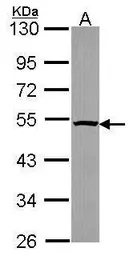PSMC4 antibody
Cat. No. GTX114675
Cat. No. GTX114675
-
HostRabbit
-
ClonalityPolyclonal
-
IsotypeIgG
-
ApplicationsWB ICC/IF IHC-P
-
ReactivityHuman


